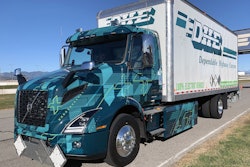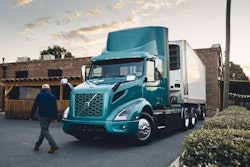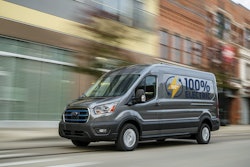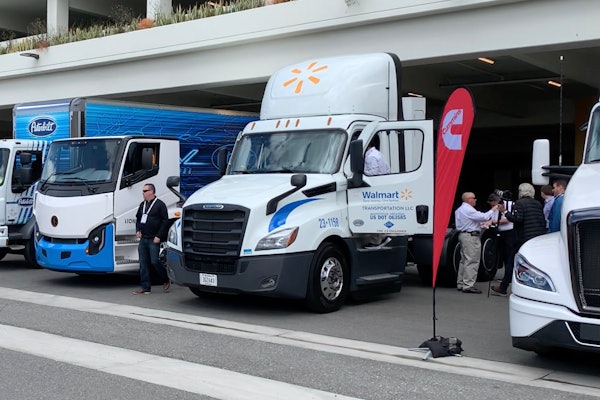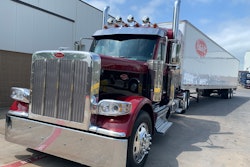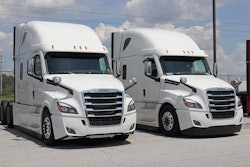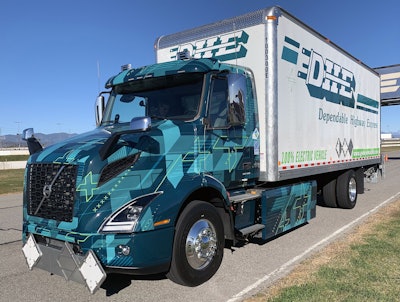
Announced just more than a year ago, the Low Impact Green Heavy Transport Solution (LIGHTS) partnership teamed together Volvo Trucks North America (VTNA) fleet customers NFI and Dependable Highway Express (DHE) in the deployment of electric VNR trucks for use at their California port operations – part of a joint effort to demonstrate the ability of battery electric vehicles (EVs) to improve freight and warehouse efficiencies, reduce emissions and improve air quality.
The first crop of LIGHTS trucks have been ordered and delivered, but delivery of one straight truck in particular may have been a little behind schedule because, last week, I was driving it around the Auto Club Speedway in Fontana, California.
My test unit, one of the first five units to be built, belonged to DHE and is part of Volvo’s LIGHTS partnership, which will see a combination of straight-trucks and tractors service dedicated routes in and around California’s Inland Empire. The number of eVNRs is expected to swell to more than 20 by the project’s end, bring along with them an array of electric support equipment, like forklifts and pickups, public and private charging infrastructure and dealership-based electric truck service and maintenance capabilities.
The first five trucks were built on the line at Volvo’s New River Valley (NRV) truck assembly plant as a glider before being finished by hand in Greensboro, N.C. When the trucks enter production late this year, the electric VNR will be built in NRV on the same line as conventional VNR models but its electric driveline will be installed on a different production line.
The electric VNR’s driveline is time-tested, having started on Volvo’s electric bus (Volvo has sold more than 4,000 electrified buses since 2010). It was then integrated into Volvo’s European FE electric cabover before making its way to the VNR.
The truck’s radiator is functional and keeps the system heated and cooled, which supports battery life. A modular power box – basically the brain of the whole outfit – sits where a diesel engine would normally. Packs of batteries flank the cab, each weighing about 1,150 pounds, and supply onboard power. The battery system is designed like a shelf, allowing packs to be slid in and out for service.

